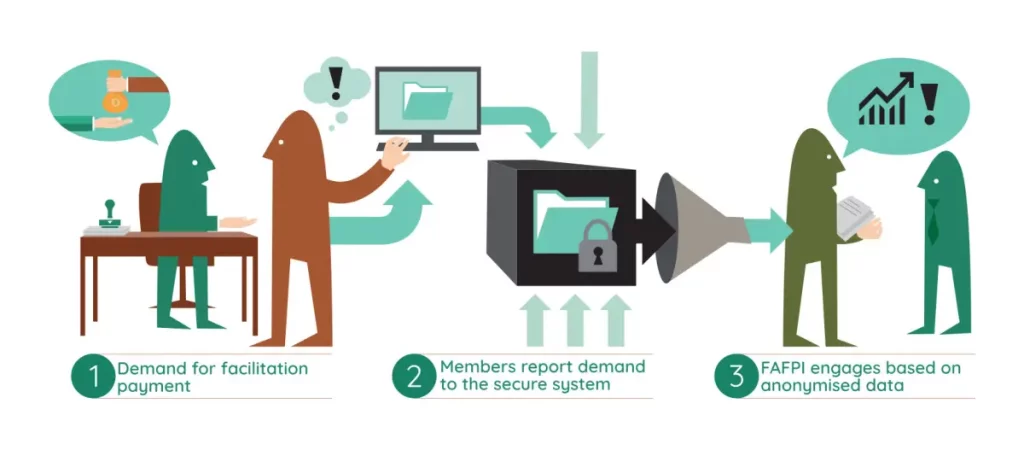FAFPI Resources
FAFPI Framework and Resources

FAFPI's Blueprint
At FAFPI, we believe that building a world free from facilitation payments requires more than intention—it requires a solid plan.
That’s why we’ve designed a Blueprint: a foundational guide made up of ten essential elements to help dismantle this corrupt practice.
We do not only design the structure—we also equip our members with the tools to bring it to life, step by step.
FAFPI's reporting Tool
To fight against facilitation payments, we need a strong foundation of evidence.
Our reporting tool is a cornerstone in that effort—gathering data from multiple stakeholders to build a picture of facilitation payment demands.
This aggregated insight empowers us to engage governments and society with concrete, collective evidence that drives change.

* This image serves only as an illustrative example of the FAFPI Reporting System. The data depicted within the image is purely hypothetical and does not reflect real-world occurrences.

What are the risks?
Our reporting system compiles a dataset documenting instances of facilitation payment demands. The system only tracks the occurrence of such demands, not whether the facilitation payment was made. This ensures that reporting organisations are not incriminated.
Input for collective action
By establishing this dataset, FAFPI enables targeted collective advocacy and engagement with local authorities and civil society stakeholders with concrete evidence.
Members' commitment
FAFPI’s members are committed to establishing an internal reporting system for collecting data regarding demands for facilitation payments. Besides, they are committed to using the FAFPI reporting tool within two years of becoming FAFPI’s members.
Who Can Use the FAFPI Reporting Tool?
Organisations must agree to FAFPI’s anti-corruption commitment to gain access to the FAFPI reporting tool.
In principle, all legal entities are eligible, provided they fall into one of the following categories:
- FAFPI's Members
- FAFPI's Partners
- Associates of FAFPI or of a partner
- Individuals not part of an organisation
Associations can play a special role by offering their networks access to the tool and serving as a bridge between FAFPI and their members.
Who Can Use the FAFPI Reporting Tool?

Get started with FAFPI’s reporting tool

Get started with FAFPI’s reporting tool
Are you ready to get started, or have any doubts?
Our method is a three-fold approach: detect, report, and use the data to engage. Here’s how it works:


Members identify and report real-world occurrences in their internal reporting system where facilitation payments are requested.

These instances are then securely reported and logged into FAFPI’s reporting system.

The anonymised data is then leveraged for taking action, presenting evidence to relevant authorities that these payments are not just perceived but real.


